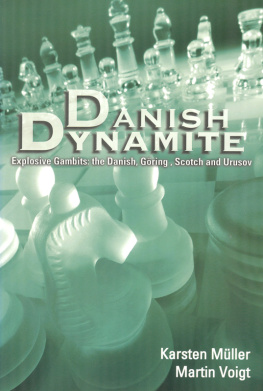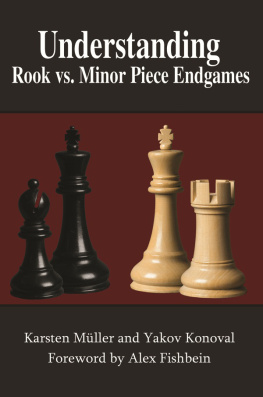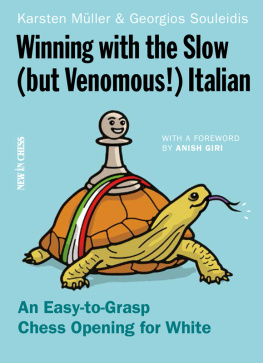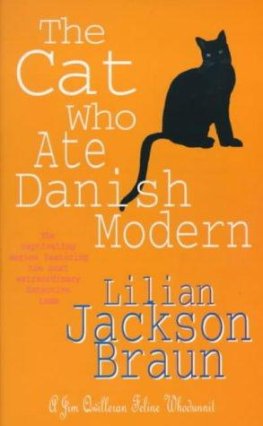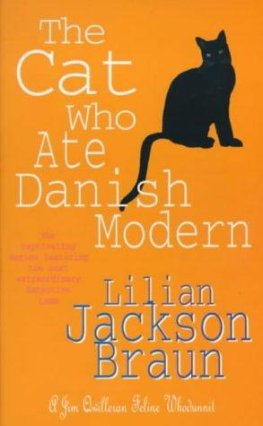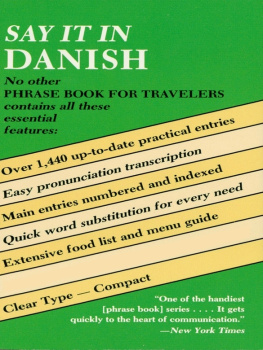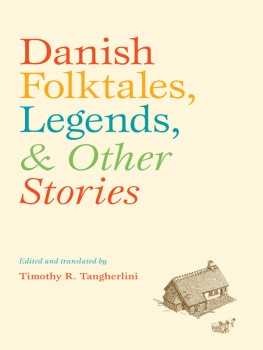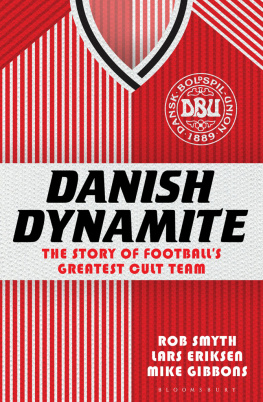Karsten Muller - Danish Dynamite, Explosive Gambits: The Danish, Goring, Scotch and Urusov
Here you can read online Karsten Muller - Danish Dynamite, Explosive Gambits: The Danish, Goring, Scotch and Urusov full text of the book (entire story) in english for free. Download pdf and epub, get meaning, cover and reviews about this ebook. year: 2003, publisher: Russell Enterprises, Inc., genre: Detective and thriller. Description of the work, (preface) as well as reviews are available. Best literature library LitArk.com created for fans of good reading and offers a wide selection of genres:
Romance novel
Science fiction
Adventure
Detective
Science
History
Home and family
Prose
Art
Politics
Computer
Non-fiction
Religion
Business
Children
Humor
Choose a favorite category and find really read worthwhile books. Enjoy immersion in the world of imagination, feel the emotions of the characters or learn something new for yourself, make an fascinating discovery.
- Book:Danish Dynamite, Explosive Gambits: The Danish, Goring, Scotch and Urusov
- Author:
- Publisher:Russell Enterprises, Inc.
- Genre:
- Year:2003
- Rating:5 / 5
- Favourites:Add to favourites
- Your mark:
- 100
- 1
- 2
- 3
- 4
- 5
Danish Dynamite, Explosive Gambits: The Danish, Goring, Scotch and Urusov: summary, description and annotation
We offer to read an annotation, description, summary or preface (depends on what the author of the book "Danish Dynamite, Explosive Gambits: The Danish, Goring, Scotch and Urusov" wrote himself). If you haven't found the necessary information about the book — write in the comments, we will try to find it.
Karsten Muller: author's other books
Who wrote Danish Dynamite, Explosive Gambits: The Danish, Goring, Scotch and Urusov? Find out the surname, the name of the author of the book and a list of all author's works by series.
Danish Dynamite, Explosive Gambits: The Danish, Goring, Scotch and Urusov — read online for free the complete book (whole text) full work
Below is the text of the book, divided by pages. System saving the place of the last page read, allows you to conveniently read the book "Danish Dynamite, Explosive Gambits: The Danish, Goring, Scotch and Urusov" online for free, without having to search again every time where you left off. Put a bookmark, and you can go to the page where you finished reading at any time.
Font size:
Interval:
Bookmark:
Danish
Dynamite
Explosive Gambits
The Danish, Gring, Scotch and Urusov
Karsten Mller
&
Martin Voight
Foreword by
Tim Harding

2003
Russell Enterprises, Inc.
Milford, CT USA
Danish Dynamite
Copyright 2003, 2010
Karsten Mller & Martin Voight
All Rights Reserved
ISBN: 1-888690-20-8
Published by:
Russell Enterprises, Inc.
P.O. Box 5460
Milford, CT 06460 USA
http://www.russell-enterprises.com
Printed in the United States of America

Foreword by ICCF Senior International Master Tim Harding
The Danish Gambit, 1.e4 e5 2.d4 exd4 3.c3, is one of the most aggressive chess openings ever devised. Dynamite was invented by a Swede, Alfred Nobel. The book you are reading now, however, was not written by Nordic players. Instead, Grandmaster Karsten Mller and FIDE Master Martin Voigt bring a touch of German method to the analysis of the explosive group of classical open games where White goes for outand-out attack based on an early e4, d4 and Bc4, often with c2-c3 to follow.
Mller and Voigt do not confine themselves to the Danish Gambit alone but they examine a whole family of related opening variations that share some common characteristics. Most importantly, White is ready to offer some material (a pawn or two, sometimes a piece or more). White goes for the jugular and if Black is not careful he will not even reach the middle game, let alone an endgame.
It is true that these openings are rarely seen in grandmaster tournaments but most of us do not play our chess at such exalted levels. Imagine we are playing in our local club league or an open tournament. We meet 1 e4 by 1e5, confident we know how to defend against the Spanish and we have a joker up our sleeve in case the Kings Gambit makes one of its occasional appearances.
White moves, but what is this, 2.d4? Take the pawn, 2exd4 and White confidently plays 3.c3. Wasnt this refuted in the 19th century? But how was it refuted? Are we supposed to take the pawn on c3, or hit back with d5, or just develop a piece? We never learned how to meet this gambit correctly and anyway the sneaking suspicion grows that the refutation was itself refuted.
While the openings discussed here may lack a little positional sophistication, they are a good training ground for young and improving players. Analysing accurately and seeing interesting tactical possibilities must be learned before deep strategy can be attempted.
From Whites point of view, a player who has an aggressive temperament and an eye for combinations, Danish Dynamite provides excellent material. For those readers who want to learn more, the authors give pointers to articles available free on the Internet which complement this work. A few of these are articles I have written for the same publisher, on The ChessCafe website.
Even a player who has already reached expert or master strength may find that the gambits discussed here can be very useful weapons against the right opponent and on the right occasion. As for correspondence players, among whom many of these gambits are popular, it is clear that the final truth has yet to be arrived at in many variations, where computer engines frequently dont see the point of a daring sacrifice until it is too late.
In the Danish Dynamite family, traps abound and transpositions into related openings often occur. If Black does not know quite a lot of theory he can find himself in a bad line of an opening he never intended to play.
The Danish Gambit is a sibling to the Gring Gambit, where the white kings knight and black queens knight are developed before the pawn is offered. Both these gambits are first cousins to the Scotch Gambit, in which after 2 Nf3 Nc6 3 d4 exd4 4 Bc4 Black is kept guessing about whether c2-c3 will follow. The authors discuss these three openings in a lot of detail, but they also spend a little time visiting second cousins like the Two Knights Defence, Max Lange Attack, and Italian Game (Guioco Piano), though you will have to look elsewhere for the details on these.
Finally the dangerous Urusov Gambit, which can arise by many move orders (including the Petroff and 2.Bc4) is given a thorough treatment. In all these lines, you can find here some new ideas to surprise opponents. Mller and Voigt have corrected a lot of old analysis and taken a critical look at many games rescued from the obscurity of databases and forgotten printed publications.
All the time they are looking for new ways for White to revive his chances. To take just one example, see page 53. In the game D.Bryson-D.Smit, from the NPSF-40 grandmaster postal tournament of 1983, the Scottish GM playing White rapidly found himself in a lost position against Smit, who had written a book on the Gring Gambit back in the 1970s. Brysons light notes in the tournament merely suggest a way he could have forced a draw in the early middlegame: hardly an inspiring outcome for White. Mller & Voigt, however, have two improvements for White over Brysons analysis, so maybe White can reconsider playing that line.
Some of the openings in this book have been played by this writer in serious games on a few occasions. For example, the Scotch/Gring Gambit position arising from 1.e4 e5 2.Nf3 Nc6 3.d4 exd4 4.Bc4 (or 4.c3 dxc3 5.Bc4 Bc5) 4Bc5 5.c3 dxc3 occurred virtually simultaneously in two of my games against Russians in an ICCF master class tournament about ten years ago.
Uncertain of which continuation was best, I played 6.Bxf7+ in one game and 6.Nxc3 in the other. I won both games and even afterwards was unsure what conclusions to draw. Mller and Voigt examine both lines in some detail in their Chapter 4, and make it clear that 6.Bxf7+ is the correct way for White to go, with good chances of maintaining the initiative. The alternative of 6.Nxc3 followed by Bg5 leads to speculative sacrifices that are probably unsound.
A guiding principle for the authors of this book is that White will play attacking chess, fighting for the initiative at every move. If Black does not meet the challenge in an equally determined way, he will surely lose.
Now it is time for you to light the fuse and watch the fireworks!
Tim Harding
Dublin, Ireland
October 2003
Introduction
The Danish Gambit (1.e4 e5 2.d4 exd4 3.c3 dxc3 4.Bc4) and the Gring Gambit (1.e4 e5 2.Nf3 Nc6 3.d4 exd4 4.c3) were very popular openings in the 19th and early 20th century. Players such as Paul Morphy, Howard Staunton, Joseph Blackburne, the German master Jacques Mieses (the Knight of the Danish Gambit) and last but not least the world champions Alekhine and Lasker (both mostly in simultaneous displays) used at least one of the gambits with good results. But the art of defense was developing more and more: Schlechter showed the effectiveness of the defense 4cxb2 5.Bxb2 d5!? 6.Bxd5 Nf6 7.Bxf7+ Kxf7 8.Qxd8 Bb4+ against the Danish Gambit (published in Deutsche Schachzeitung, March 1914. Marshall had given it in the November 1913 issue of the American Chess Bulletin), and Capablanca found a new way to slow Whites stampeding pieces in his game against Frank Marshall, Lake Hopatcong 1926. But, remember, neither line is a refutation. Nowadays these gambits are rarely seen in top level over-the-board competitions, but there are several correspondence players (N.A.Preo, Kampfhenkel, Firnhaber, J. Barrios Troncoso and Dubini for the Danish, and Dolgov, Dosi, Cimmino, A.Gonzalez Freixas, L.Pantaleoni, P.A.Parnenzini, W.Przybyla, Marchisotti and Warzecha for the Gring Gambit, just to name a few) who have scored many victories, which shows that it contains venom. The title indicates that White has to watch out that he is not blown away himself, and in several lines he has to follow a narrow path to justify his sacrifices and to keep the fire of his initiative burning. However, he should be able to do so:
Next pageFont size:
Interval:
Bookmark:
Similar books «Danish Dynamite, Explosive Gambits: The Danish, Goring, Scotch and Urusov»
Look at similar books to Danish Dynamite, Explosive Gambits: The Danish, Goring, Scotch and Urusov. We have selected literature similar in name and meaning in the hope of providing readers with more options to find new, interesting, not yet read works.
Discussion, reviews of the book Danish Dynamite, Explosive Gambits: The Danish, Goring, Scotch and Urusov and just readers' own opinions. Leave your comments, write what you think about the work, its meaning or the main characters. Specify what exactly you liked and what you didn't like, and why you think so.

